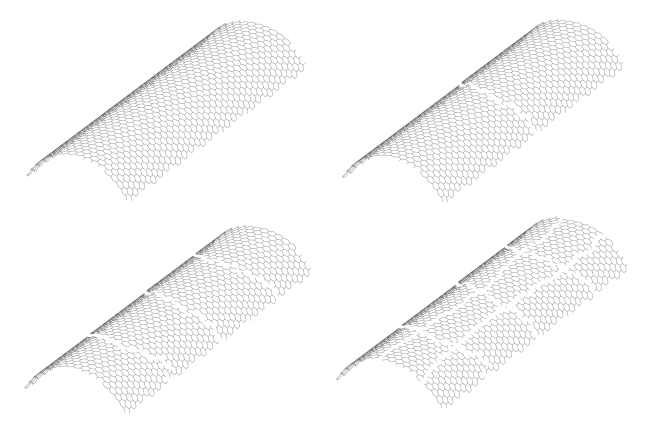Carbon Nanotubes – the New Black
2022-01-18Carbon nanotubes are of great interest in both scientific research and commercial applications thanks to the unique properties of the material. A new thesis at Karlstad University looks at how the atomic structure influences the different properties of the material.
- At the moment, there are too few measuring standards and no proper classification system for carbon nanotubes, says Mattias Flygare, recently qualified doctor of physics who just published his thesis. I have studied the effect of crystallinity on different properties, such as the bending stiffness and electrical conductivity of the tubes. We know that if the tubes had a perfect atomic structure, these properties would be outstanding, however, this is rarely the case in reality. Instead, what we are seeing is that the walls of the tubes consist of a patchwork of various large “grains” with a well ordered atomic structure. The size of these crystallite grains, together with other defects, gives the material different properties.
Carbon nanotubes are very thin and light hollow tubes consisting of carbon atoms, with walls that are only one atom thick. The tube wall is like a sheet of graphite rolled into a cylinder, with hexagonal patterns forming the sheet. Due to their unique mechanical, electrical and thermal properties, carbon nanotubes offer great potential for scientific research and industrial and commercial applications, for example in the composite materials industry, but the area of use is wider than that.
Grains of perfect patterns
- I have studied the extent to which different irregularities in the atomic structure affect the properties of the material, says Mattias Flygare. In order to study the atomic structure, I have used our transmission electron microscope here at Karlstad University. The microscope uses a beam of electrons instead of visible light to analyse the material, which makes it possible to look at the tubes at nanometer level, that is, one billionth of a metre, which is unbelievably small. My studies show, for example, that the properties’ dependence on the order and periodicity of the atoms inside the tube walls is not always completely linear, and there are critical points where the properties can be drastically improved simply by increasing the crystallinity a little. This is a very interesting result that shows the need for more research and development of characterisation methods for carbon nanotubes, so that the right kind of tube can be used for the right purpose, and to further develop the production methods for the tubes.
Transmission electron microscope
Using this technique, you can get around the resolution limitations of visible light, which is about one micrometer, and down to about 100 picometers, that is, 0.1 nanometers, which is high enough to resolve individual atoms. Inside the microscope at the university, it is also possible to manipulate the carbon nanotubes with a custom-built probe that can be controlled at the nanometer level.
- Our electron microscope is located in house 21, but it is completely isolated from vibrations from the rest of the house, says Mattias Flygare. If the microscope had contact with the house, it would only take one person walking down the corridor outside the room for the vibrations to make the image blurry and unusable.
Areas of application for carbon nanotubes
Today, you can find applications for carbon nanotubes in many different products, and researchers continue to explore creative new ways of using the material. Carbon nanotubes are found in various composite materials, for example, in sports equipment such as tennis rackets and bicycles, due to its ability to improve strength and yet reduce weight. Thanks to its electrical conductivity, it is also useful in all kinds of electronics, and there are even more exotic uses on the horizon.
You can find the fulltext version of the thesis here:
The influence of crystallinity on the properties of carbon nanotubes




